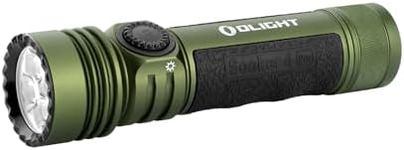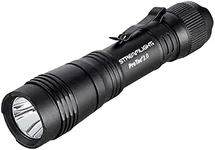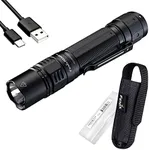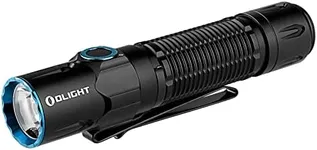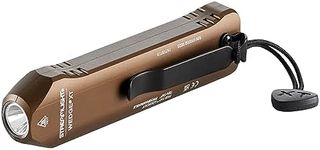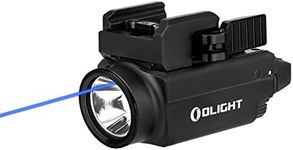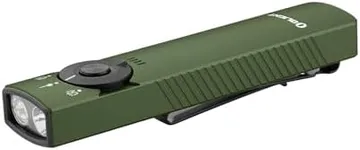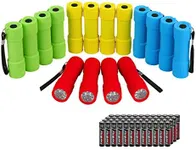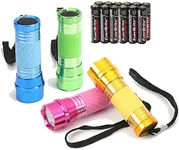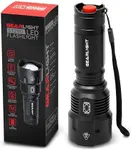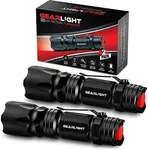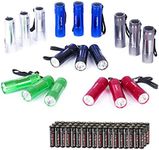Buying Guide for the Best Tactical Led Flashlights
Choosing the right tactical LED flashlight can be a game-changer for various activities such as outdoor adventures, emergency situations, or professional use. The key is to understand the different specifications and how they align with your specific needs. Here’s a guide to help you navigate through the essential features and make an informed decision.LumensLumens measure the total amount of visible light emitted by the flashlight. This spec is crucial because it determines how bright the flashlight will be. Flashlights with lower lumens (up to 100) are suitable for close-up tasks and indoor use. Mid-range lumens (100-500) are good for general outdoor activities and home security. High lumens (500 and above) are ideal for search and rescue operations, tactical use, and long-distance visibility. Choose the lumen rating based on how far and how brightly you need to see.
Beam DistanceBeam distance indicates how far the light can reach. This is important for activities where you need to see far ahead, such as hiking or search and rescue. Short beam distances (up to 50 meters) are sufficient for indoor use and close-range tasks. Medium beam distances (50-200 meters) are good for general outdoor activities. Long beam distances (200 meters and above) are essential for tactical and professional use. Consider the typical environment and distance you need to illuminate when choosing the beam distance.
Battery TypeThe type of battery used in a flashlight affects its runtime, weight, and convenience. Common options include disposable batteries (like AA or AAA), rechargeable batteries (like 18650 or 21700), and built-in rechargeable batteries. Disposable batteries are easy to replace and find but can be costly over time. Rechargeable batteries are more economical and environmentally friendly but require access to a charging source. Built-in rechargeable batteries offer convenience but may limit usage if you can't recharge them. Choose based on your preference for convenience, cost, and environmental impact.
RuntimeRuntime refers to how long the flashlight can operate on a single charge or set of batteries. This is important for ensuring the flashlight lasts as long as you need it. Short runtimes (up to 2 hours) are suitable for quick tasks. Medium runtimes (2-10 hours) are good for general use and outdoor activities. Long runtimes (10 hours and above) are essential for extended use in emergencies or professional settings. Consider how long you typically need the flashlight to operate without needing a recharge or battery replacement.
DurabilityDurability is about how well the flashlight can withstand rough conditions, including impacts and water exposure. This is crucial for outdoor and tactical use where the flashlight might be dropped or exposed to rain. Look for flashlights with high impact resistance and water resistance ratings (like IPX4, IPX7, or IPX8). For general use, moderate durability is sufficient. For professional or extreme outdoor use, high durability is essential. Choose based on the conditions you expect to encounter.
Size and WeightThe size and weight of a flashlight affect its portability and ease of use. Smaller, lighter flashlights are easier to carry and handle, making them ideal for everyday carry (EDC) and quick tasks. Medium-sized flashlights offer a balance between portability and performance, suitable for general outdoor activities. Larger, heavier flashlights often provide more power and longer runtimes, making them suitable for professional use and situations where performance is prioritized over portability. Choose based on how you plan to carry and use the flashlight.
Modes and FeaturesMany tactical LED flashlights come with multiple modes (such as high, medium, low, strobe, and SOS) and additional features (like zoomable beams or built-in USB charging). These can enhance the flashlight's versatility and usefulness in different situations. Basic models with a few modes are sufficient for general use. More advanced models with multiple modes and features are ideal for tactical, professional, or emergency use. Consider what additional functionalities you might need based on your typical use cases.
